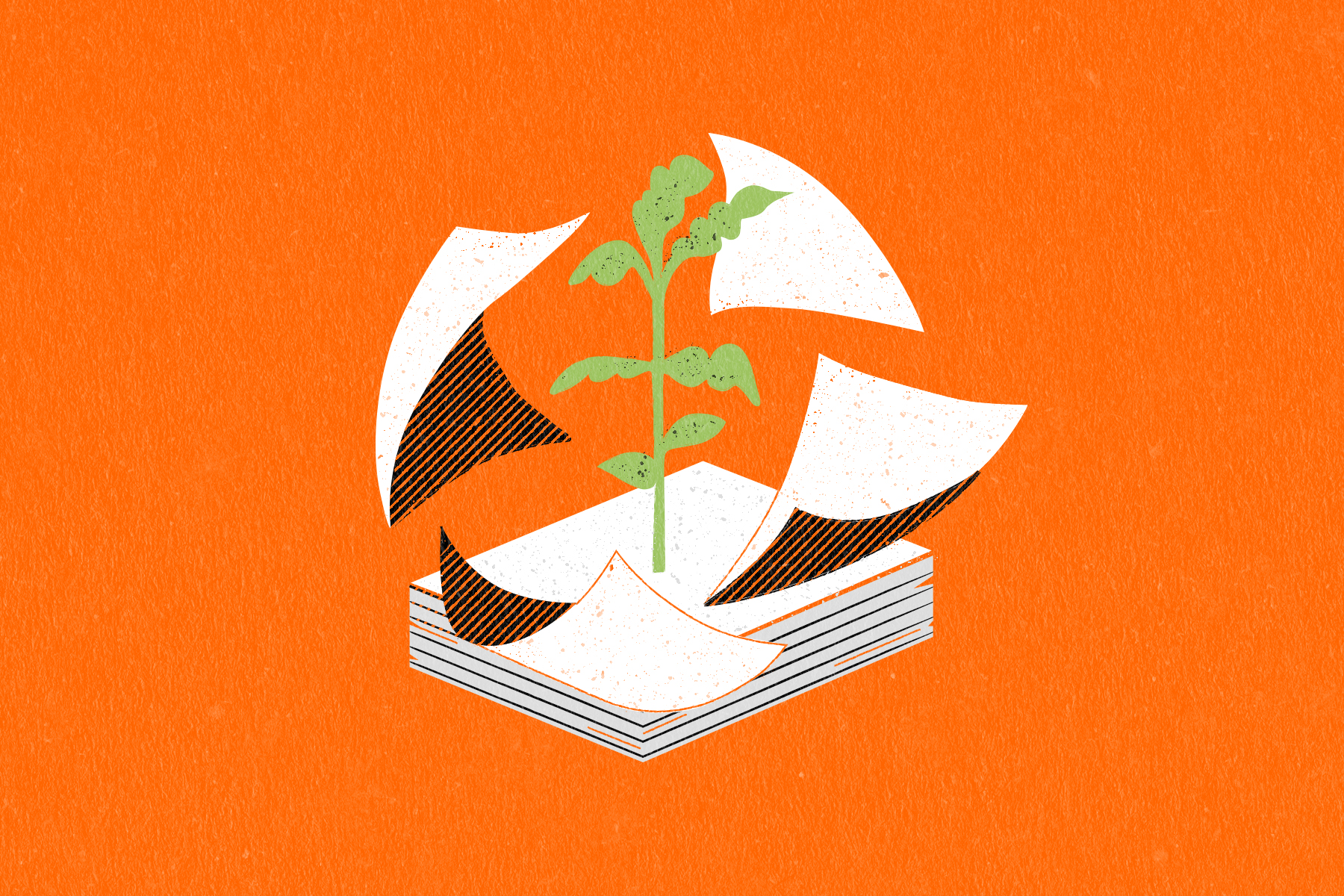- Home
- About
- Company articles
- How we ensure the paper in our books is sustainably sourced
How we ensure the paper in our books is sustainably sourced

For over ten years we’ve been sourcing sustainable paper for our books. As part of our newest Sustainability Policy, Michael Perera, Paper Purchasing Manager, explains what sustainably sourced paper means, and how we regularly learn from our partners in paper mills.
What does sustainably sourced paper mean, and when did we start using it for our books?
Sustainably sourced paper is multifaceted really. From forest management to social impact, conservation to lowering carbon emissions, all elements of producing paper should be helping deliver positive impacts on forests, markets and people. The sourcing of the paper should not be contributing to unethical issues in the pulp industry such as illegal logging, abuse of workers’ rights or advancing climate change. It also means transparency along the supply chain, from the forest to the printing of the book, every process has to be maintained and within strict environmental standards – standards that are constantly evolving.
We’ve always advocated FSC® (Forest Stewardship Council®), as it’s the most credible and effective out of all the certification systems for forest products. Even though there’s room for improvement in all certification bodies, FSC® provides stronger forest and rights protections than other schemes, and is favoured by non-governmental organisations such as WWF and The Woodland Trust.
'We’ve been focused on using sustainable paper for over ten years'
We’ve been focused on using sustainable paper for over ten years. The awareness was always there in terms of monitoring paper mill practices and pushing for more certified paper on our books. Since then the importance and focus has only grown, which has led us to being more knowledgeable and proactive in our environmental impacts.
Could you tell us about recycled papers vs sustainably sourced virgin fibres?
We’re always exploring new areas and are very supportive of the circular economy. In the last few years we’ve learned a lot more about paper production. Even though we’ve always been assured by how environmentally sound our suppliers are, we were prompted to investigate and scrutinise all of the variables when looking at sustainable paper, both with virgin fibre and recycled paper.
An independent, neutral study was commissioned to analyse carbon and environmental footprints of the main papers used by Penguin Random House UK, and the main recycled book papers on the market. The study thoroughly analysed all factors of paper production – from emissions to water, landfill, to factoring in carbon storage in recycled papers. The study concluded that even when factoring in the environmental benefits of recycled paper, due to the renewable energy used and the efficiency of their integrated mills, Holmen, who are our largest supplier of mono paper (only black ink used on the text paper), had the lowest carbon footprint. Holmen actually has the lowest carbon footprint out of all our papers.
'We will always continue to research on more sustainable papers'
We will always continue to research on more sustainable papers, but at the moment it’s been proven that using our current mono papers has the lowest carbon footprint, and is the most sustainable.

Visit the Sustainability hub
Could you tell us about working with paper mills who have the highest environmental standards? Have we learned anything from them?
For all our mono books printed in the UK, we’ve developed long term relationships with the paper suppliers. We’ve been working with them consistently for the quality of their products, but also because of their extensive environmental procedures, which are very efficient. As well as producing the best papers for our books, it’s encouraging to know that historically the mills have always had strict regulations when it comes to forest management, as well as long term goals with renewable energy and lowering emissions within paper production.
'It’s really reassuring that our main paper mills are already significantly ahead with their practices, and a big factor as to why we use their paper '
Holmen are based in Sweden, where long term responsibility to the forest has been embedded into their practices. They are directly contributing to lowering carbon in the atmosphere, operating on, and developing, new renewable energy sources. It’s really reassuring that our main paper mills are already significantly ahead with their practices, and a big factor as to why we use their paper.
We’ve learned from our suppliers over the years, which has led us to implement our environmental policies and strategies. As development and focus in the environmental sector grows, a lot of questions arise and we can definitely quiz our suppliers on their environmental credentials if we feel they need to be challenged. Through this we’ve come to learn the depth of their environmental practices, which has expanded our own knowledge as to just how sustainable their papers are.
What is something you’re keen to develop to make our production as sustainable as possible?
The next step is to continue the work we’ve done so far and expand into other areas that can be improved upon. Courtney, our Sustainability Production Manager, is currently developing a toolkit, looking at other elements of production to further lower our impact.
The toolkit will allow us to have more transparency, and show the environmental impact of certain finishes and processes, such as foil or glitter. We’re developing it to be an accessible reference, with the ultimate goal to enable everyone at Penguin Random House to make better, more informed decisions around the production of our books.
'When you have a big influence as a publisher, you should be setting an example.'
When you have a big influence as a publisher, you should be setting an example. Focusing on sustainability is one of the most important things a large company can do, and one of the main things we can do to have a positive impact, is to use sustainably sourced paper. It is after all the largest element in the physical book.